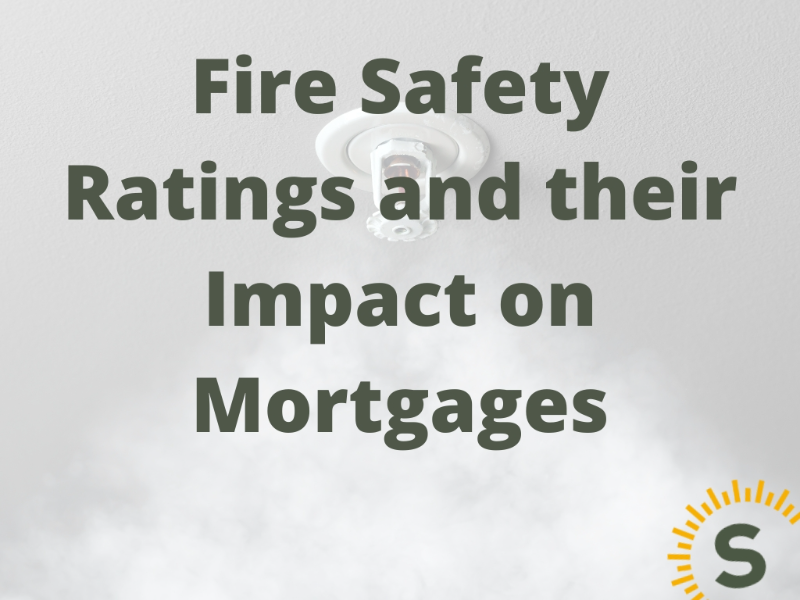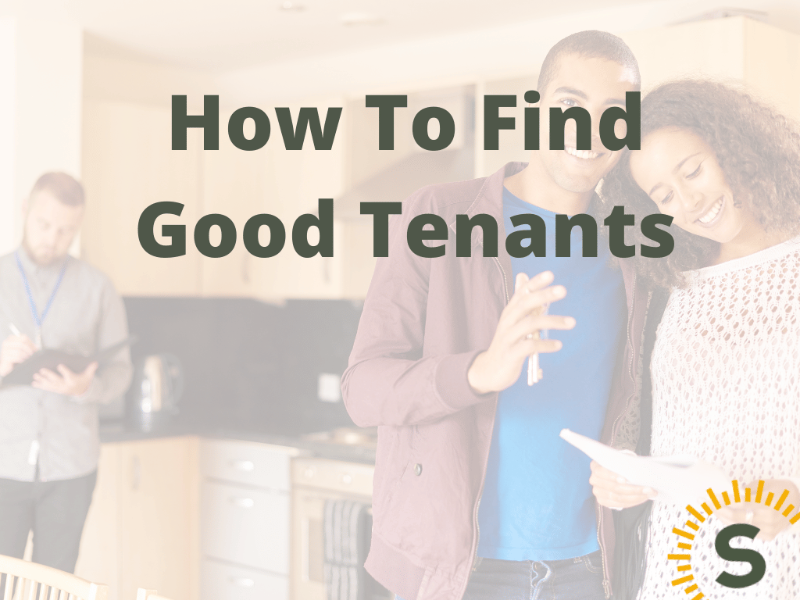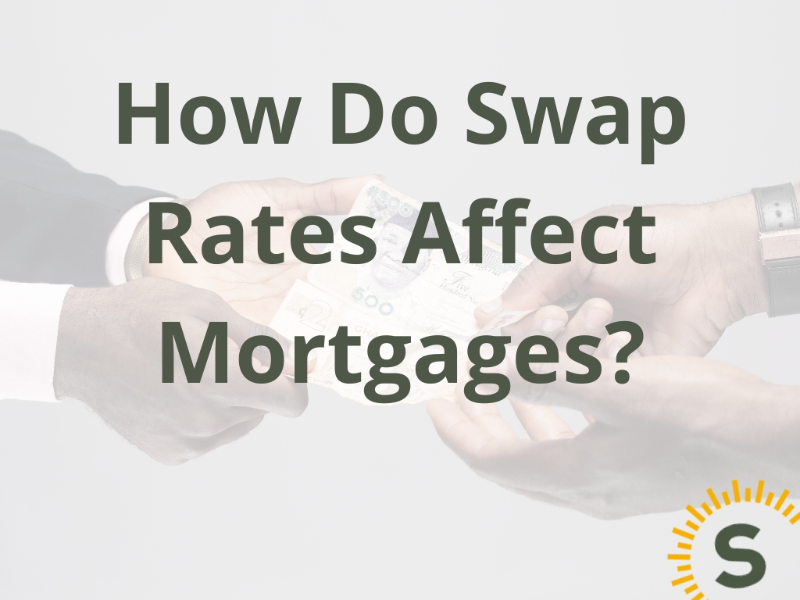
To ensure residential leasehold buildings are safe there are important requirements to follow, both applying to low- and high-rise flats. One requirement is the External Wall System Fire Review, or EWS1 form. This form proves that a property has been assessed for fire risks.
When it comes to the EWS1 form, it's crucial to understand the specific ratings given to these assessments. One rating that keeps popping up and applies to my flat is the B2 fire safety rating. This rating indicates that there are combustible materials in a building's external wall that need attention.
In this insight, I will explain what a B2 fire safety rating means and how it affects mortgages. We will also discuss the steps that major banks have taken to make lending easier for properties with this rating.
The B2 fire safety rating is like a label given to a building's outer walls after they've been checked by a qualified expert. This rating means there are materials in the walls that can catch fire, so they need to be fixed to reduce the risk. It's important to know that having a B2 rating doesn't mean the building is dangerous or can't be lived in. It just means there are specific things that need to be done to make it safer.
The materials in the outer walls that can catch fire include things like cladding, insulation, fire-stops, and fire barriers. These materials might not meet the standards set by building rules, which say they should be hard to burn. There might also be things attached to the walls, like balconies, that add to the fire risk.
In the past, banks were really cautious and didn't want to lend money for properties until all the dangerous materials were completely removed. But things have changed now, and major banks are more flexible when it comes to properties with a B2 fire safety rating.
According to new guidance from UK Finance and the Building Societies Association (BSA), banks like Barclays, HSBC, Lloyds, Nationwide, NatWest, and Santander have agreed to consider lending on properties with a B2 rating if there's a solid plan and enough money to get rid of the dangerous materials. This means that as long as there's a comprehensive plan in place to replace those materials, alongside a set date and a letter from the building developer confirming this, banks are willing to help people get mortgages for these properties.
It's important to remember that different banks might have their own rules and how much risk they're willing to take with properties that have a B2 fire safety rating. That's why it's really important for borrowers to talk to mortgage brokers to get a full range of options from different lenders.
Understanding the B2 fire safety rating requires distinguishing between an EWS1 assessment and a fire risk assessment.
Both assessments are important but serve different purposes in ensuring overall fire safety.
When it comes to fire safety ratings, there are different classifications that give more detailed information about the assessment results. These classifications help people like leaseholders, potential buyers, and lenders understand the specific risks involved. So, let's take a look at the various classifications for fire safety ratings:
Fire Safety Classifications |
||
|---|---|---|
A1 |
|
No implications on mortgage lending. |
A2 |
|
No impact on mortgage lending. |
A3 |
|
Mortgage lenders will not lend against this property until confirmation of remedial works is provided. |
B1 |
|
Mortgage lenders will lend against this property. |
B2 |
|
Mortgage lenders will not lend against this property until remedial work is confirmed with an agreed date. |
if your residential building is either over six storeys or 18m tall and has external cladding or a timber balcony, then you'll need an EWS1 form.
The rules about which buildings require an assessment actually changed in 2021. RICS (in partnership with the government) has released a report with detailed information and a decision tree to help determine if a specific building needs an assessment.
**** 4.2

When it comes to fire safety ratings and mortgages, there's good news and bad news. The good news is that some lenders have started to lend money for properties with A3 and B2 ratings. However, the bad news is that it requires having an agreed date for the remedial works to be completed, and that is something that is mostly beyond your control.
If you find yourself in this situation, it's best to seek advice from the freeholder of the property, your agent or mortgage adviser, depending on whether you are the buyer or seller of the property.

Stuart is an expert in Property, Money, Banking & Finance, having worked in retail and investment banking for 10+ years before founding Sunny Avenue. Stuart has spent his career studying finance. He holds qualifications in financial studies, mortgage advice & practice, banking operations, dealing & financial markets, derivatives, securities & investments.
 No minimum
No minimum  Newcastle-under-Lyme, Staffordshire
Newcastle-under-Lyme, Staffordshire Free Consultations
Free Consultations
 No minimum
No minimum  No obligation consultation
No obligation consultation
 No minimum
No minimum  No obligation consultation
No obligation consultation
 No minimum
No minimum  Free Consultations
Free Consultations
 No minimum
No minimum  No obligation consultation
No obligation consultation
 No minimum
No minimum  No obligation consultation
No obligation consultation
 No minimum
No minimum  Free Consultations
Free Consultations
 No minimum
No minimum  Coatbridge, Lanarkshire
Coatbridge, Lanarkshire Initial or Ongoing Consultation Fees
Initial or Ongoing Consultation Fees
 No minimum
No minimum  Initial or Ongoing Consultation Fees
Initial or Ongoing Consultation Fees
 £21,000 +
£21,000 +  Initial fee free consultation
Initial fee free consultation
 London, Greater London
London, Greater London No obligation consultation
No obligation consultation
 No minimum
No minimum  No obligation consultation
No obligation consultation
 No minimum
No minimum  Initial fee free consultation
Initial fee free consultation
 No minimum
No minimum  No obligation consultation
No obligation consultation
 No minimum
No minimum  No obligation consultation
No obligation consultation
 No minimum
No minimum  No obligation consultation
No obligation consultation
 No minimum
No minimum  Initial fee free consultation
Initial fee free consultation
 No minimum
No minimum  No obligation consultation
No obligation consultation
 No minimum
No minimum  Initial fee free consultation
Initial fee free consultation
 £101,000+
£101,000+  Bishop's Stortford, Hertfordshire
Bishop's Stortford, Hertfordshire No obligation consultation
No obligation consultation
 No minimum
No minimum  Derry / Londonderry, County Derry / Londonderry
Derry / Londonderry, County Derry / Londonderry Free Consultations
Free Consultations
 No minimum
No minimum  Stockton-on-Tees, County Durham
Stockton-on-Tees, County Durham Free Consultations
Free Consultations
 No minimum
No minimum  Initial fee free consultation
Initial fee free consultation
 No minimum
No minimum  Cheltenham, Gloucestershire
Cheltenham, Gloucestershire No obligation consultation
No obligation consultation
 No minimum
No minimum  Free Consultations
Free Consultations





Our website offers information about financial products such as investing, savings, equity release, mortgages, and insurance. None of the information on Sunny Avenue constitutes personal advice. Sunny Avenue does not offer any of these services directly and we only act as a directory service to connect you to the experts. If you require further information to proceed you will need to request advice, for example from the financial advisers listed. If you decide to invest, read the important investment notes provided first, decide how to proceed on your own basis, and remember that investments can go up and down in value, so you could get back less than you put in.
Think carefully before securing debts against your home. A mortgage is a loan secured on your home, which you could lose if you do not keep up your mortgage payments. Check that any mortgage will meet your needs if you want to move or sell your home or you want your family to inherit it. If you are in any doubt, seek independent advice.